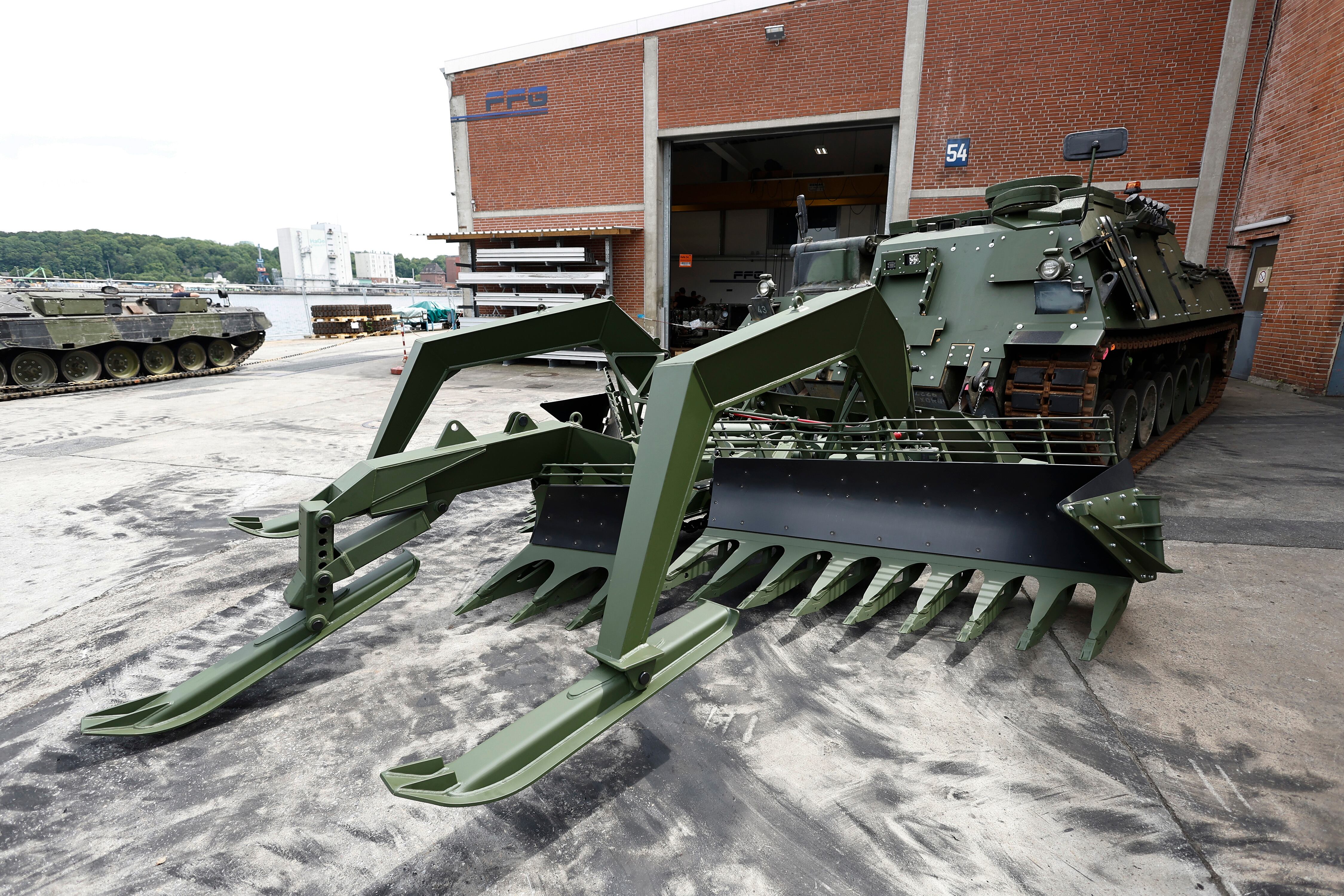VILNIUS, Lithuania (AP) — With Russia’s war on Ukraine in its 17th month, and Western countries sending increasingly hi-tech and long-range weapons and ammunition to help President Volodymyr Zelenskyy defend his country, it’s easy to lose track of where NATO stands.
NATO Secretary General Jens Stoltenberg — the top civilian official at the world’s biggest security alliance — routinely praises allies for helping Ukraine’s troops to fight back. But when he does, Stoltenberg is talking about individual member countries, not NATO as an organization.
As a NATO summit in Lithuania’s capital begins Tuesday, here’s a look at the North Atlantic Treaty Organization and what it’s doing to help Ukraine.
NATO’S SUPPORT NON-LETHAL ONLY
The 31-nation military alliance provides only non-lethal support to Ukraine: Fuel, combat rations, medical supplies, body armor, winter uniforms and equipment to counter mines, chemical and biological threats and drones.
NATO makes its decisions by consensus, and not all member countries agree on sending weapons. The alliance does not impose sanctions, although some of its members do through other organizations like the European Union.
FUTURE UKRAINE MEMBERSHIP
NATO is helping Ukraine’s armed forces to modernize and shift from Soviet-era equipment and military doctrine to modern NATO gear to allow its army to work seamlessly with allied forces. NATO is also helping to strengthen Ukraine’s defense and security institutions.
That assistance is designed to ensure that Ukraine can join NATO at some point in the future, well after the war is over. U.S. President Joe Biden and his counterparts — who are meeting for a summit in the Lithuanian capital of Vilnius — have promised that the country will eventually gain membership.
NATO READINESS IN THE REGION
NATO’s primary goal since Russia began building up its troops around Ukraine in 2021 has been to reinforce its own territory, particularly the countries on its eastern flank — so near to Russia, Ukraine and Belarus — from Estonia in the north down to Romania on the Black Sea.
With the war now in its 17th month, NATO wants to deter Russian President Vladimir Putin from broadening the conflict to allied territory farther west.
Around 40,000 troops are on standby along the eastern flank. About 100 aircraft take to the skies in that territory on any given day, and a total of 27 warships are operating in the Baltic and Mediterranean Seas this month. Those numbers are set to rise.
Under new plans to be endorsed in Vilnius, NATO aims to have up to 300,000 troops ready to move to its eastern flank within 30 days. The plans divide its territory into three zones — the high north and Atlantic area, a zone north of the Alps, and another in southern Europe.
MEMBER COUNTRIES
The forces and materiel that NATO drums up for its own defense come from the member countries. NATO has no weapons of its own. The battleships, warplanes, missiles and potential pool of more than 3 million personnel are owned and supplied by member states, mostly at their own cost.
The only equipment NATO has is a fleet of early warning radar planes and some surveillance drones.
The NATO alliance, with its main headquarters in Brussels and military base in Mons, Belgium, is open to any European nation that wants to join and can meet the requirements and obligations. Finland entered in April, and its Nordic neighbor Sweden is on the cusp of joining its ranks.
The Soviet Union, during the Cold War, and Russia have been major preoccupations since the organization was founded in 1949, and in many ways remain the NATO’s reason for being.
U.S.’ DOMINANT PRESENCE
The United States is without doubt the biggest and most influential member. It spends more on its own military budget than all the others combined. It also pays almost a quarter of NATO’s common funding for infrastructure and collectively owned equipment.
So, Washington has a big say in how things are run, and smaller allies long to train and work with U.S. forces because it gives them access to equipment and expertise that they cannot afford alone.
STOLTENBERG’S ROLE
The North Atlantic Council meets at ambassadorial level most weeks in Brussels, and less often at the ministerial and heads of state levels, and are chaired by Stoltenberg.
In essence, the former Norwegian prime minister runs the headquarters located near the Brussels airport, a sprawling, cavernous edifice that cost over 1 billion euros to build.
Stoltenberg does not order the allies around. His job is to encourage consensus and speak on their behalf publicly as a single voice representing all 31 members.
COMMON DEFENSE CLAUSE
On the ground, NATO has helped to keep peace in the Balkans and fought the Taliban-led insurgency in war-torn Afghanistan before the group took control of the country — the alliance’s biggest-ever operation. It was launched after the United States triggered its “all for one and one for all” common defense clause in the wake of the Sept. 11, 2001 attacks.
It is the only time the clause, known as Article 5, has been used. That security guarantee is the reason Finland and Sweden sought to join NATO and why Ukraine and other countries in Europe also want in.





